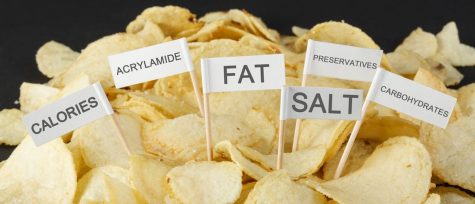School Cafeteria Food in the U.S.
September 10, 2020

It’s no secret that the food students eat in the United States is harmful. According to Business Insider, they are found to be at a higher risk for having an unhealthy weight and high cholesterol than children that don’t eat school lunch. Though restrictions have been put in place, they’re not being enforced properly.
The United States Food and Drug Administration requirements state that thirty percent of calories should come from fats, and ten percent from saturated fats. Schools violated the policy, as shown in the School Nutrition Dietary Assessment Study for 2004 and 2005. The assessment reported that only twenty percent of schools met the dietary fat guidelines, and seventy percent exceeded saturated fat guidelines. Schools continue to go against the requirements set by the FDA to this day.
Many schools have offered substitutes for certain foods in their menus. They swapped baked foods for fried, and offered low fat milk instead of whole. They have fruits and vegetables displayed in their cafeterias, but taking them and then eating them is entirely up to the students.
Having students able to choose what they do and don’t eat is a problem. Though it’s important that they have the right to choose and figure out what they like on their own, most students will go for unhealthy snacks rather than healthy meals.
Some schools connected with local farms as a source for food. Doing so had advantages such as saving money, cutting back on pollution and the global warming impact that transporting food long distances has, and having fewer pesticides in school lunches.
The Center for Food and Justice (CFJ) spearheaded the Farm to School lunch program in 2000. It connects local farms to schools, successfully supporting both local farms and the installation of more nutritious food in cafeterias. It even allows participating schools to visit farms and teach their students more about nutrition. This program now operates in 19 states and hundreds of school districts.
Students can, of course, forego school lunches entirely and bring food from home. That way, parents can regulate what their children eat and how much of it they have. The problem is that not all parents have the time to pack lunches, and not all students are old enough to do so for themselves. Luckily, companies like Kid Chow, Health e-Lunch Kids, and Brown Bag Naturals have started delivering organic food lunches. Though the price is three times higher than that of cafeteria food, it should go down as more students start to buy it.
Despite all the solutions that have been found to make students’ diets more healthy, it’s unlikely that any major changes will be made unless the president or governors of each state make restrictions that schools absolutely have to abide by.
For further reading:
https://www.thoughtco.com/make-cafeteria-food-better-kids-environment-1204003
https://www.businessinsider.com/school-lunches-in-the-us-compared-to-other-countries-2015-2
https://healthfully.com/460727-how-bad-does-cafeteria-food-affect-a-students-health.html
